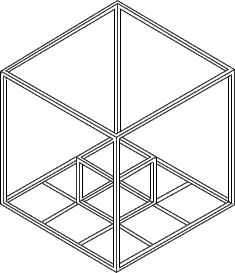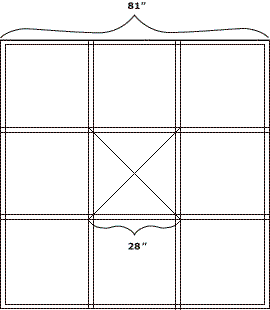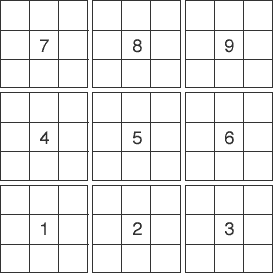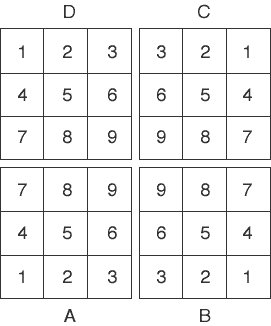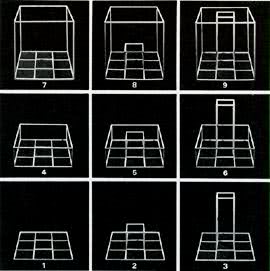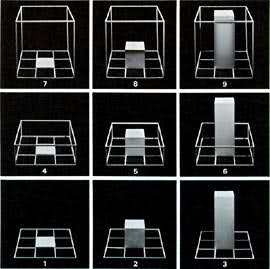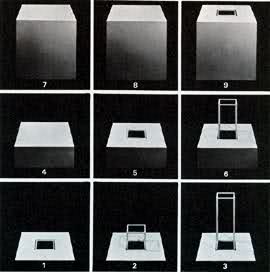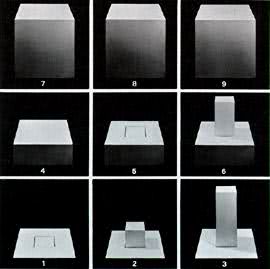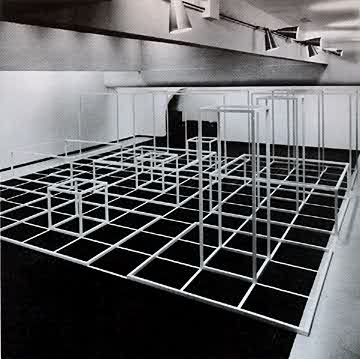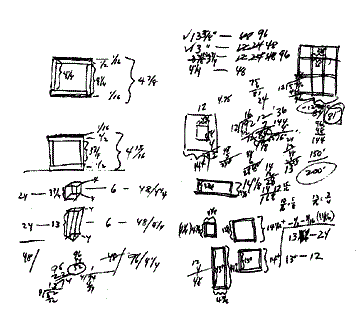|
|
The set contains nine pieces. They are all of the variations within the scope of the first premise. The first variation is a square within a square. The other variations follow: a cube within a square, a square within a cube, an outer form raised to the height of the inner cube, the inner cube raised to the height of the outer, larger cube, a cube within a cube and all crossmatching of these forms. The first set contains nine pieces. These pieces are laid out on a grid. The grid equalizes the spacing and makes all of the pieces and spaces between of equal importance. The individual pieces are arranged in three rows of three forms each. In each row there are three different parts and three parts that are the same. The inner forms of one row of three are read in sequence as are the outer forms. The possible permutations of these rows are: 123, 456, 789, 147, 258, 369, 159, 357.
The measurements for the large set are:
|
1. Inside 28" x 28"
Outside 81" x 81"
4. Inside 28" x 28"
Outside 81" x 81" x 28"
5. Inside 28" x 28"
Outside 81" x 81" x 81"
|
2. Inside 28" x 28" x 28"
Outside 81" x 81"
5. Inside 28" x 28" x 28"
Outside 81" x 81" x 28"
8. Inside 28" x 28" x 28"
Outside 81" x 81" x 81"
|
3. Inside 28" x 28"81"
Outside 81" x 81"
6. Inside 28" x 28" x 81"
Outside 81" x 81" x 28"
9. Inside 28" x 28" x 81"
Outside 81" x 81" x 81"
|
For the small set substitute 13-3/8" for 81" and 4-5/8" for 28".
|
|
